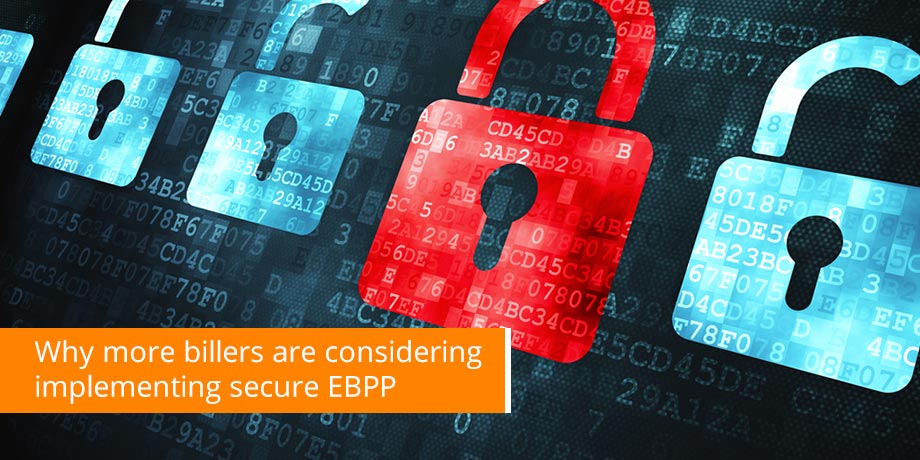
In 2006 the Striata newsletter will be heavily focused on North American case studies. You can expect regular updates on adoption / customer acceptance from many of our billers.
We are very pleased to announce that our first Canadian customer is going live this month and will have higher adoption by their go-live date than most utilities achieve in its first year.
‘Implementing Electronic Bill Presentment & Payment’
Implementing Secure ‘PUSH’ Email Billing is often confused with what is required for a website based project. Unlike website based eBilling;
- The biller does not need to purchase any hardware, software or bandwidth.
- There is no impact on a biller’s internal infrastructure.
- There is very limited, if any, ongoing technical resources required.
- The entire process is fully automated; billing cycles occur without human intervention.
- Following ‘go-live’, customer service specific to this billing service is minimal, and in most cases billing queries into the general contact centre are actually reduced.
The project requirements are therefore limited to planning and a maximum of 16 weeks of implementation. The following is a high level view of the necessary steps:
Step 1:
- The biller’s data is highly encrypted and transferred to the data center using our ultra-secure, proprietary transfer software. (The software can be set-up by a mid level IT resource in less than half a day.)
- The biller is very seldom required to change the output from the billing system in any way and generally the entire billing output file is sent. This eliminates any requirement for internal resources in this regard.
- Data transfer is fully automated with multiple ‘fail safes’ & built-in checks.
Step 2:
Project Brief: This is the first three weeks following project approval and involves the completion and sign-off of a detailed document including:
- Creative, copy & template layouts
- Business rules & process flows
- A detailed project plan
- Datasource / mapping (covered in more detail below.)
- Responsible parties
This document covers every aspect of the project and is signed off by both Striata and the responsible parties within the biller’s organization.
Step3:
Data transfer: Striata North America has two secure ASP data centers in the USA, one in Herndon and the other in San Antonio (For redundancy, backup and ‘hot-swap’ capabilities.)
Step 4:
Billing data & templates: Mapping the data received from a biller and creating the multiple billing templates required, is the largest part of the project and can take up to 50% of the total duration. The output of this process is:
- Datasource code is created that accepts the billing data stream and parses the required content into the correct template, after applying the necessary business rules.
- The result of this process is a batch of secure eBills that are identical to the paper bills in every respect. (Presuming of course, this is the goal of the project.)
- Data files, calculators, customer submission forms and other file types (PDF for perfect printing, for example) can also be embedded at this time.
Step 5:
Payment: The payment setup part of the project is one of the easiest:
- The payment options that are currently offered by the biller are matched.
- As are any convenience fees, payment terms etc.
- An automated daily accounts receivable file delivered to the biller in exactly the same format as their current lockbox and / or online payment system.
- Reconciliation processes are replicated to avoid any separate / additional work.
- A secure web console is provided for biller self service / payment queries, status’ etc.
Step 6:
Training & customer service: Due to the simplicity of what the customer receives, and the high level of automation of the platform, training is simple and quick:
- Operational & Administration resources
- Billing & Marketing departments
- The Contact center
- Striata also offers very cost effective self-service training at the Striata Learning Portal.
Step 7:
Undeliverable emails & business processes:
- Once the initial clean up is complete, you should have less than 2% undeliverable email address and under 1% unsubscribes.
- During development, Striata Deliverability services are initiated.
- If Striata is not managing your email database on your behalf, then a batch file is sent daily or weekly for automatic & programmatic update of your CIS / CRM system.
- A flag is set to turn the customer’s paper bill back on and if the CIS system allows for it, flags the record for cleaning.
Step 8:
Testing: Once the project development is complete, all aspects of the solution are stress tested in a live-configured environment.
(Your customer’s email addresses can begin to be captured in parallel with the above. See this article for more)
In summary; a biller is able to complete a project of this nature without any disruption to the normal course of business, special resources & budgets, nor additional staff.



